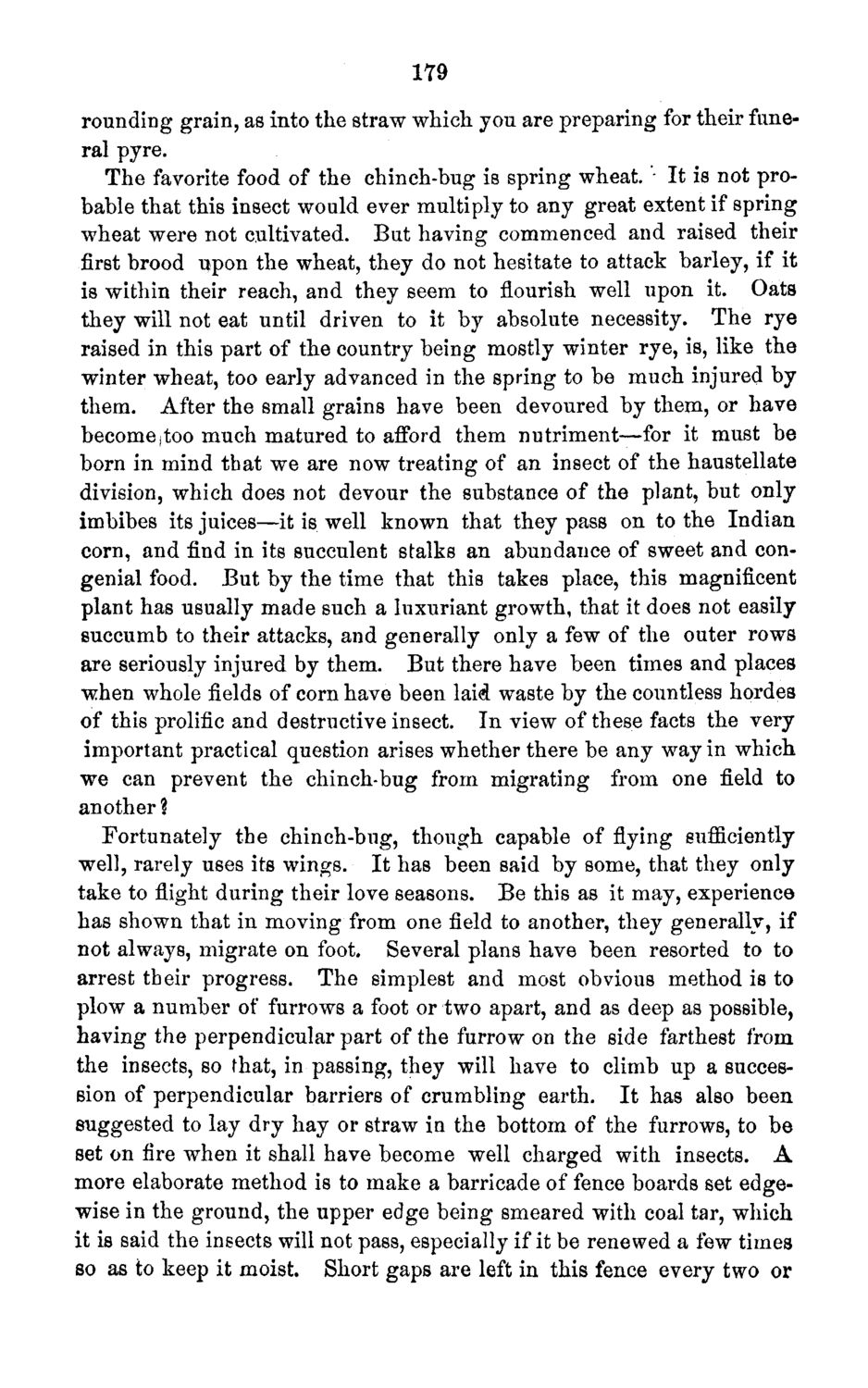| |
| |
Caption: Board of Trustees Minutes - 1871
This is a reduced-resolution page image for fast online browsing.

EXTRACTED TEXT FROM PAGE:
179 rounding grain, as into the straw which you are preparing for their funeral pyre. The favorite food of the chinch-bug is spring wheat. * It is not pro' bable that this insect would ever multiply to any great extent if spring wheat were not cultivated. But having commenced and raised their first brood upon the wheat, they do not hesitate to attack barley, if it is within their reach, and they seem to flourish well upon it. Oats they will not eat until driven to it by absolute necessity. The rye raised in this part of the country being mostly winter rye, is, like the winter wheat, too early advanced in the spring to be much injured by them. After the small grains have been devoured by them, or have become (too much matured to afford them nutriment—for it must be born in mind that we are now treating of an insect of the haustellate division, which does not devour the substance of the plant, but only imbibes its juices—it is well known that they pass on to the Indian corn, and find in its succulent stalks an abundance of sweet and congenial food. But by the time that this takes place, this magnificent plant has usually made such a luxuriant growth, that it does not easily succumb to their attacks, and generally only a few of the outer rows are seriously injured by them. But there have been times and places when whole fields of corn have been laid waste by the countless hordes of this prolific and destructive insect. In view of these facts the very important practical question arises whether there be any way in which we can prevent the chinch-bug from migrating from one field to another? Fortunately the chinch-bug, though capable of flying sufficiently well, rarely uses its wings. It has been said by some, that they only take to flight during their love seasons. Be this as it may, experience has shown that in moving from one field to another, they generally, if not always, migrate on foot. Several plans have been resorted to to arrest their progress. The simplest and most obvious method is to plow a number of furrows a foot or two apart, and as deep as possible, having the perpendicular part of the furrow on the side farthest from the insects, so that, in passing, they will have to climb up a succession of perpendicular barriers of crumbling earth. It has also been suggested to lay dry hay or straw in the bottom of the furrows, to be set on fire when it shall have become well charged with insects. A more elaborate method is to make a barricade of fence boards set edgewise in the ground, the upper edge being smeared with coal tar, which it is said the insects will not pass, especially if it be renewed a few times so as to keep it moist. Short gaps are left in this fence every two or
| |